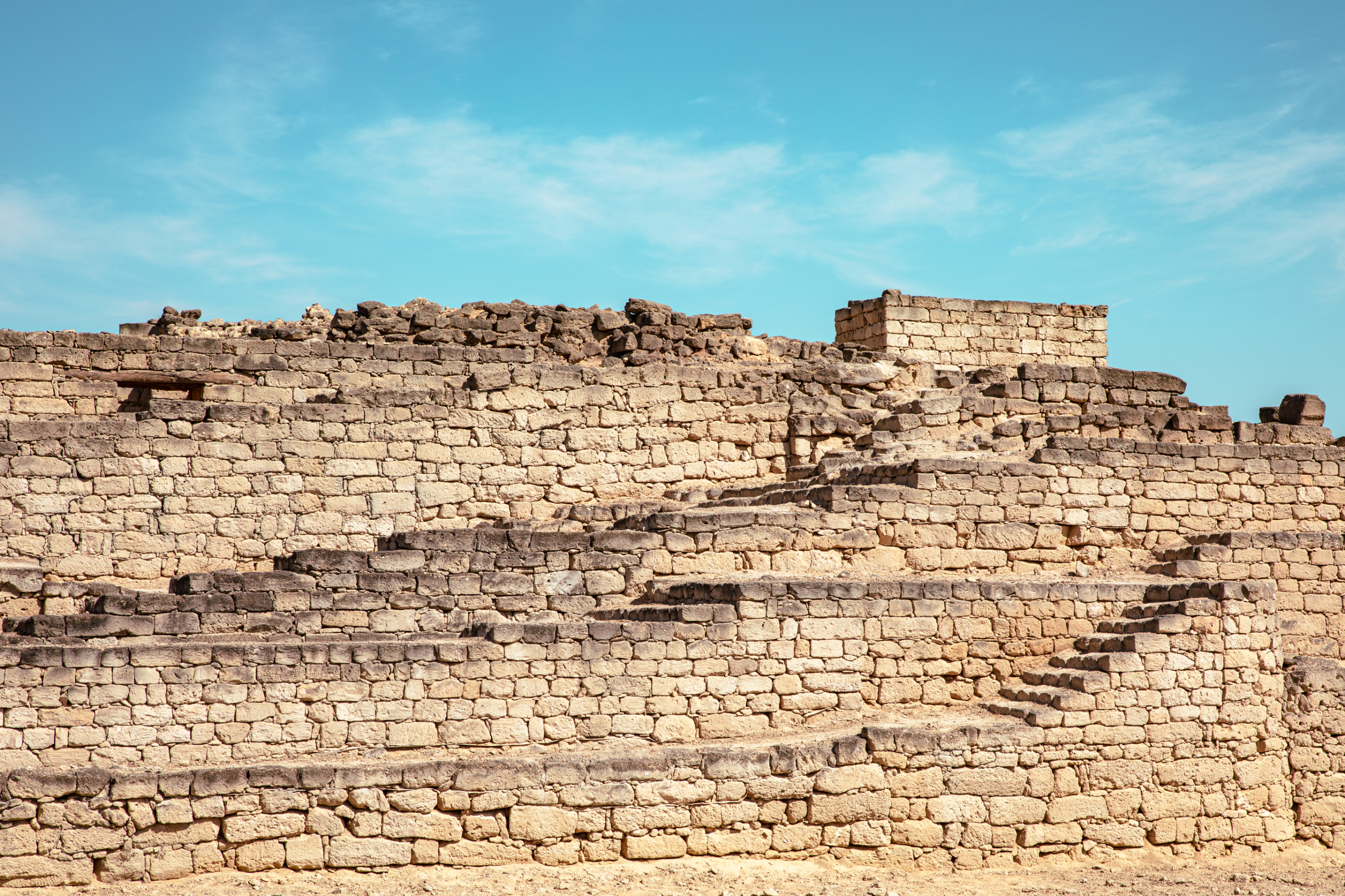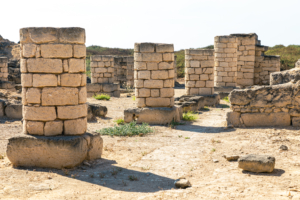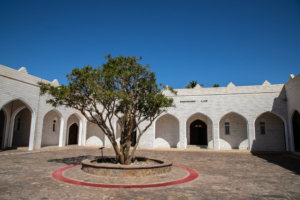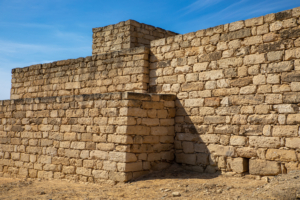

Unveiling the Secrets of the Frankincense Land Museum in Salalah, Oman
The Frankincense Land Museum in Salalah, Oman sits at the center of an ancient frankincense trade route and tells a story that goes back 5,000 years. This unique museum opens a window into how a valuable aromatic resin shaped an entire region’s destiny.
The museum stands as proof of Oman’s maritime heritage while celebrating its cultural identity. Modern exhibits fill this impressive complex, which sits within the UNESCO World Heritage site of Al Baleed Archeological Park. Visitors can explore a rich collection of artifacts, historical documents, and interactive displays.
Let us guide you through the museum’s architectural brilliance and fascinating exhibits. You’ll experience ancient Frankincense trade routes and maritime treasures firsthand. The institution plays a vital role in preserving Oman’s cultural heritage for generations to come.
The Ancient Legacy of Frankincense Trade
Our deep exploration of the ancient Frankincense trade takes us back to a time when this aromatic resin matched gold in value.
Origins of the frankincense route
The remarkable trade network dates to 1500 BC. The domestication of camels transformed desert transportation at that time. A complex network stretched from the Arabian Peninsula to the Mediterranean, later becoming the Incense Route.
Historical significance in global trade
Frankincense trade’s effect on the ancient world proved extraordinary. Southern Arabia shipped an astounding 3,000 tons of incense annually to the Mediterranean world by 200 BC. This trade brought unprecedented wealth to the region and connected several civilizations:
- Egyptian pharaohs needed it for religious ceremonies
- Greek sailors created vital maritime routes
- The Roman Empire imported thousands of tons yearly
- Chinese merchants traded along the connected Silk Road

Dhofar’s role as frankincense capital
Dhofar earned a special place in this grand trading network. The region’s Boswellia sacra trees produced the world’s finest frankincense in its unique microclimate – the Silver and Hojari grades. Khor Rori’s natural harbor became a significant export point where frankincense started its trip to distant lands.
The trade generated such immense wealth that Roman historian Pliny the Elder noted it made the southern Arabians “the richest people on Earth.” The Frankincense Land Museum Salalah preserves this legacy today through ancient trade artifacts that tell the story of this remarkable period.
Architectural Marvel and UNESCO Heritage
The Frankincense Land Museum’s entrance leaves visitors in awe with its architectural grandeur that naturally combines state-of-the-art design with Oman’s heritage.
Design elements of the museum complex
The museum’s design creates perfect harmony between contemporary architecture and traditional Omani elements. The structure honors the region’s cultural heritage and includes modern amenities. Natural light and thoughtful space planning enhance the building’s welcoming atmosphere, making it a story in itself.
Integration with Al Baleed Archeological Park
The museum’s perfect blend with the Al Baleed Archeological Park, a UNESCO World Heritage site, creates a breathtaking sight. Ocean views from the Indian Sea provide a stunning backdrop to the museum complex. Visitors connect with both natural surroundings and historical elements of the site.
Conservation efforts and recognition
Royal Decree No. 6/80 protects this remarkable site. Several innovative measures help maintain its authenticity:
- Specialized access paths with Geo-textiles protect archeological surfaces
- Stone walls with sacrificial layers ensure long-term preservation
- Visitor Interpretation Centers manage tourist flow (over 150,000 visitors in 2014)
The government’s steadfast dedication to the site’s integrity stands out. This museum complex plays a vital role in the cultural tourism strategy. It educates visitors about the Land of Frankincense’s rich traditions while preserving them for future generations.

Journey Through Time: Museum Collections
Treasures that bring Oman’s rich history to life surround us in the museum’s halls. The collections tell an incredible story of trade, culture, and maritime excellence through millennia.
Maritime hall treasures
The Maritime Hall draws visitors with its impressive collection of wooden models crafted with precision. The rise of Omani vessels from 3000 BC to present day amazes us with its display of:
- Traditional Battil and Boom vessels
- Ancient Sambuq and Ghanjah boats
- Original navigational instruments
Historical artifacts and manuscripts
The History Hall houses an extraordinary collection of artifacts that paint a vivid picture of ancient life. The most precious exhibit reveals an 8th-century letter from Prophet Mohammed with his seal, addressed to the people of Oman. Beautiful Quranic manuscripts and poetry collections rest among these remarkable pieces and showcase the region’s literary heritage.
Interactive cultural displays
The sort of thing I love about this museum is its innovative approach to storytelling. Multimedia presentations bring the frankincense trade to life brilliantly. Interactive displays showcase traditional tools used for frankincense extraction and processing. Digital exhibits help visitors understand the complex trade networks that once connected Oman to distant shores. The museum’s creative use of technology makes history available and engaging to visitors of all ages.
Preserving Omani Heritage
The preservation wing of the Frankincense Land Museum showcases Oman’s dedication to keeping its rich heritage alive through detailed documentation and restoration work.
Traditional boat-building techniques
The museum’s collection of ancient shipbuilding knowledge captivates visitors. Boats from the early Bronze Age used wood, reeds, rope, and bitumen as primary materials. Records show these traditional vessels needed more than 130 kilometers of cordage and 37,000 holes to build properly. Modern craftsmen continue this legacy by building these vessels from memory, without any detailed blueprints.

Ancient trade documentation
Carefully preserved manuscripts and trade records fill the museum’s archives. The collection includes ancient poetry and linguistic manuscripts that tell stories of frankincense trade routes. The documentation of traditional navigational instruments that guided sailors through big oceans stands out as remarkable.
Cultural preservation initiatives
The museum’s influence reaches way beyond its walls through several key programs:
- Mutually beneficial partnerships with international scholars to research and document
- Educational programs that teach traditional crafts
- Local artisan supports preserving ancient techniques
- Modern conservation methods to protect artifacts
Professor William Zimmerle, a leading Middle East scholar, highlights these preservation efforts as crucial to keeping Dhofar’s vibrant legacy alive. The museum strikes a perfect balance between traditional preservation methods and modern conservation techniques that will help these cultural treasures survive for generations to come.

Conclusion
The Frankincense Land Museum sits at the intersection of ancient trade routes and modern conservation efforts. This remarkable institution shows us how a simple aromatic resin shaped global trade and built one of history’s greatest commercial empires.
Traditional architecture blends seamlessly with modern exhibition techniques throughout the museum. Visitors can experience 5,000 years of history coming alive before their eyes. The museum preserves more than just artifacts and documents – it keeps ancient traditions alive. Local artisans still practice traditional boat-building methods and the delicate art of harvesting frankincense.
This UNESCO World Heritage site protects Oman’s cultural legacy while building bridges to its future. Maritime treasures, historical manuscripts, and engaging interactive displays help future generations understand how frankincense trade shaped human civilization.
The museum demonstrates Oman’s steadfast dedication to protecting its heritage and sharing these incredible stories globally. Each visit uncovers new insights about this captivating chapter of human history. Anyone interested in understanding global commerce and cultural exchange will find this museum fascinating. Your next story begins with this journey grab your spot and Book Now!
